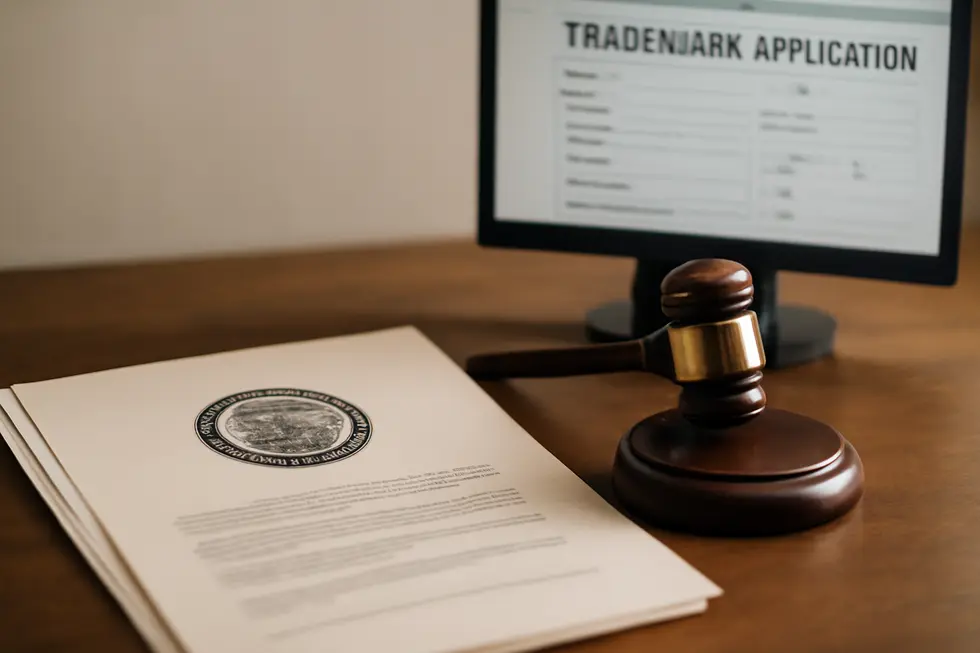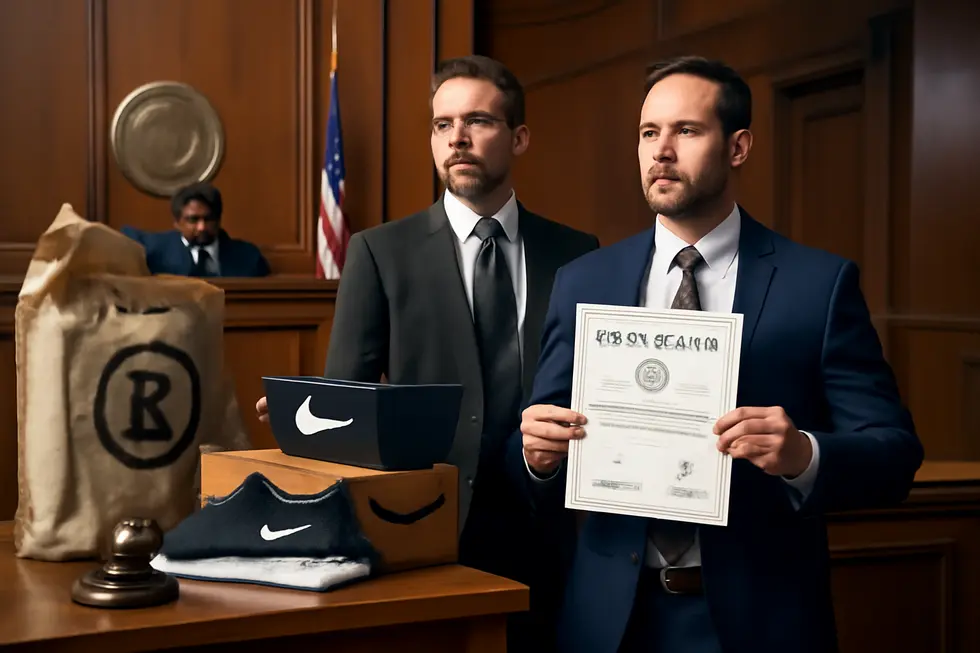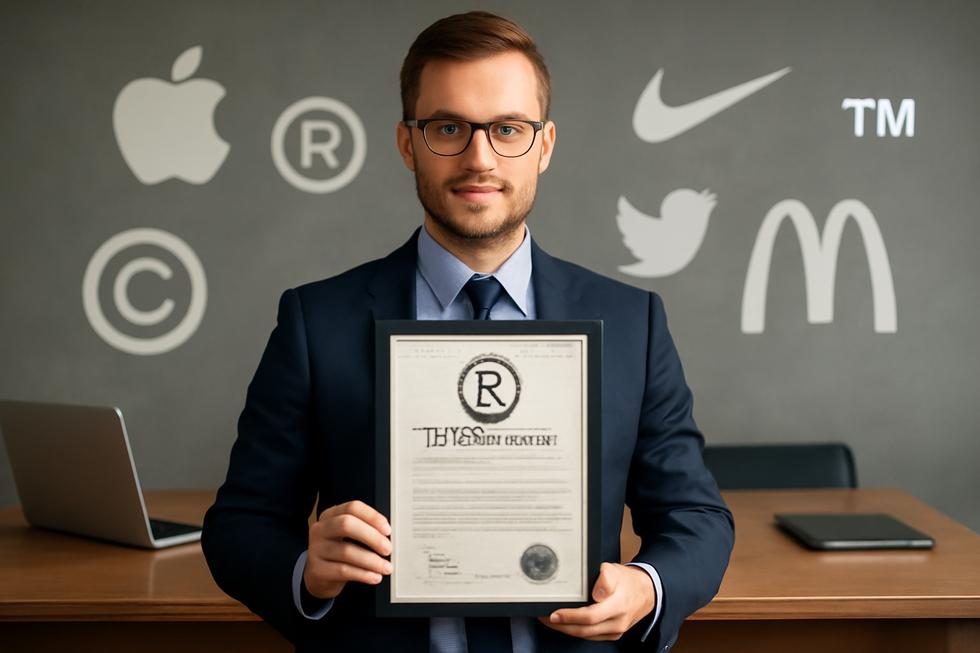Introduction
Trademarks form the backbone of brand recognition and business identity. For business owners, understanding how trademarks work is essential not only to protect your products and services but also to maintain a trustworthy reputation in the marketplace. From the fundamental definitions to the intricacies of legal protection and registration, mastering trademarks offers a strategic advantage. This guide explores trademarks’ essential functions, the step-by-step registration process, and how trademark protection extends beyond words to logos, slogans, and even packaging. Finally, you will learn how trademarks enforce your exclusive rights and secure your market position against infringement and unfair competition.
Tables of Contents
Chapter 1: Understanding How Trademarks Work: Definitions and Core Functions
- The Legal Framework and Distinctive Nature of Trademarks
- The Essential Roles of Trademarks in Commerce: Building Trust and Protecting Brands
- How Trademarks Gain Legal Strength: Navigating Protection and Registration
- The Economic Power of Trademarks: Building Brand Equity and Driving Business Value
- Safeguarding Consumers and Society: The Crucial Role of Trademarks in Market Trust
Chapter 2: Exploring How Trademarks Work Through Legal Protection and Registration
- Navigating the Legal Landscape: How Trademark Registration Creates Strong Brand Protection
- Mastering the Trademark Registration Journey: Steps to Secure Legal Brand Protection
- Mastering Trademark Enforcement: Legal Tools and Strategic Protection to Safeguard Your Brand
- Economic Impact and Brand Strength: The Value of Trademark Protection and Registration
- Navigating Global Trademark Registration: Legal Frameworks and Geopolitical Realities
Chapter 3: How Trademarks Work in the Registration Process: Steps, Duration, and Costs
- Navigating the Trademark Registration Journey: From Search to Secured Rights
- Navigating Trademark Registration Timelines: Key Phases and Typical Durations
- Navigating Trademark Registration Costs: A Clear Guide to Fees and Expenses
- Navigating Legal Hurdles and Procedural Complexities in Trademark Registration
- Navigating Federal vs. State Trademark Registration: Strategic Decisions for Comprehensive Brand Protection
Chapter 4: How Trademarks Work to Protect Brand Identity Beyond Names
- The Legal Shield Around Unique Brand Elements: Extending Trademark Protection Beyond Words
- Expanding Brand Protection: Non-Traditional Trademarks and Trade Dress in Trademark Law
- Safeguarding Brand Identity: Enforcement and Continuous Protection of Trademark Rights Beyond Names
- Securing Complex Brand Elements Through Trademark Registration and Renewal
- Expanding Trademark Protection: Building and Enforcing Unique Brand Elements for Market Leadership
Chapter 5: How Trademarks Work in Enforcing Exclusive Rights and Market Security
- Legal Foundations of Trademark Exclusivity and Market Protection Against Infringement
- Strengthening Brand Protection: Using Customs and Border Controls to Enforce Trademark Rights
- Defending Brand Exclusivity: Monitoring, Opposition, and Cancellation in Trademark Enforcement
- Leveraging Exclusive Licensing Agreements to Strengthen Trademark Rights and Market Control
- Leveraging Trademark Rights to Strengthen Consumer Trust and Defend Market Position
Chapter 1: Understanding How Trademarks Work: Definitions and Core Functions

1. The Legal Framework and Distinctive Nature of Trademarks
Trademarks are legally recognized signs—words, symbols, or combinations—that uniquely identify the source of goods or services. Fundamentally, they prevent consumer confusion by distinguishing one business’s offerings from another’s. Unlike patents or copyrights, trademarks cover source identifiers such as logos, slogans, sounds, colors, or packaging designs. The law requires trademarks to be distinctive—capable of signaling origin rather than being generic or merely descriptive unless a secondary meaning develops. Distinctiveness falls on a spectrum from generic (not protectable) to fanciful (strongest protection). Trademark rights primarily arise through actual commercial use, while federal registration enhances legal enforceability nationwide. This structure supports both brand integrity and fair competition by securing identification elements under U.S. law (15 U.S.C. § 1127). For more on protecting marks, see the guidance on trademark protection for business names and logos.
2. The Essential Roles of Trademarks in Commerce: Building Trust and Protecting Brands
Trademarks function as powerful commercial tools that identify the origin of goods or services, enabling consumers to distinguish one business from another. Beyond source identification, trademarks guarantee consistent quality, as customers associate a mark with the standards set by its owner. This reassurance fosters consumer trust and loyalty, which are vital for a brand’s long-term success. Trademarks also play a crucial role in preventing unfair competition by legally barring others from using confusingly similar signs that might mislead buyers. Moreover, trademarks empower businesses to license their brand assets, expanding market reach while controlling how the brand is portrayed. Federal registration enhances these benefits by granting exclusive rights and strong legal recourse against infringement. For a deeper look at protecting business identity and logos, see this resource on trademark protection for business names and logos. Further details on enforcement under laws like the Lanham Act clarify how trademarks sustain brand distinctiveness and commercial integrity.
3. How Trademarks Gain Legal Strength: Navigating Protection and Registration
Trademarks gain legal force primarily through registration with authorities such as the United States Patent and Trademark Office (USPTO). Registration establishes a public record of ownership and grants exclusive nationwide rights to use the mark for specific goods or services. This legal recognition enables owners to enforce their rights effectively, including filing infringement lawsuits and preventing counterfeit imports. While unregistered marks can acquire some protection under common law through use, registered trademarks provide stronger, clearer safeguards. The registration process requires a thorough search to avoid conflicts, submission of an application specifying usage categories, and examination by the trademark office, which may take over a year. Additionally, trademarks must be distinct enough—ranging from fanciful to suggestive—to qualify for protection; generic terms are excluded. This structured system balances protecting brand identity with maintaining fair competition. For a detailed guide on applying for trademarks, visit the USPTO Trademark Resources or explore insights on trademark protection for business names and logos.
4. The Economic Power of Trademarks: Building Brand Equity and Driving Business Value
Understanding trademarks as economic assets reveals their pivotal role beyond legal protection. Trademarks foster brand equity by creating consistent, recognizable identities that inspire consumer trust and loyalty, which in turn elevate sales and market share. This intangible value contributes significantly to business valuation, as trademarks are recognized as property with measurable financial worth. Strong trademark portfolios attract investors and partners by signaling a stable and legally protected market presence. They also facilitate market expansion by maintaining brand consistency worldwide while deterring imitators. Importantly, registered trademarks grant exclusive rights that reinforce competitive advantages and simplify legal enforcement. Successful trademark management aligns with broader business goals, ensuring sustained growth and safeguarding one of the company’s most valuable assets. For further insight on trademark protection, see trademark protection business name and logo. External resources like LegalVision provide an in-depth explanation of trademarks’ revenue potential and strategic benefits.
5. Safeguarding Consumers and Society: The Crucial Role of Trademarks in Market Trust
Trademarks serve as vital identifiers that link products or services to their source, enabling consumers to make informed choices. By signaling origin and consistent quality, they reduce confusion and protect buyers from counterfeit or inferior goods. This trust-building function fosters loyalty and supports fair competition by discouraging deceptive practices. Beyond individual businesses, trademarks uphold broader societal interests by promoting transparency and accountability in commerce. They incentivize innovation and contribute to economic growth by safeguarding intellectual property rights. Consequently, trademarks are indispensable not only for protecting brand reputation but also for maintaining a healthy marketplace where consumers and companies thrive together. For more insight into trademark protection, see Trademark protection for business names and logos and the comprehensive guidelines provided by UpCounsel.
Chapter 2: Exploring How Trademarks Work Through Legal Protection and Registration

1. Navigating the Legal Landscape: How Trademark Registration Creates Strong Brand Protection
Trademarks gain their power through a legal system that balances use-based rights with formal federal registration. While common law rights arise simply by using a mark in commerce, they are typically limited geographically and harder to defend. Federal registration with the USPTO enhances protection by granting nationwide rights, legal presumptions of ownership, and the ability to enforce against infringement in federal courts. This registration process requires an application detailing the mark and its associated goods or services, followed by examination and publication to allow third-party opposition. Registered trademarks also benefit from laws like the Federal Trademark Dilution Act, which safeguards famous marks from misuse even outside direct competition. Moreover, trademark ownership can be transferred through assignments, ensuring brand value endures through business changes. Together, these elements create a robust framework that prevents confusion and secures exclusive commercial identity. For more on common law rights versus registration, see common law trademark rights. Explore how the Federal Trademark Dilution Act preserves famous marks here: https://patentpc.com/blog/understanding-the-federal-trademark-dilution-act-a-practical-guide
2. Mastering the Trademark Registration Journey: Steps to Secure Legal Brand Protection
Navigating the trademark registration process is essential to securing exclusive legal rights over your brand’s name, logo, or slogan. It begins with a comprehensive trademark search to verify your mark’s uniqueness, avoiding conflicts with existing registrations. Following this, you file an application—often electronically—with the relevant authority, such as the USPTO in the United States. The application is then examined by a trademark attorney to assess compliance and potential conflicts. If issues arise, an office action details objections that must be addressed promptly. Upon approval, your mark is published for opposition, allowing third parties to challenge registration. Successful registration grants nationwide protection and stronger enforcement rights that extend beyond mere common law usage. Because the process can be complex and time-consuming, consulting experienced legal professionals ensures smoother navigation and effective brand safeguarding. For a detailed guide on this process, IndiaFilings offers an extensive walkthrough. For insights on protecting business names and logos through trademarks, see comprehensive trademark protection tips.
3. Mastering Trademark Enforcement: Legal Tools and Strategic Protection to Safeguard Your Brand
Effective trademark enforcement begins with securing a registered mark, which grants nationwide legal recognition and exclusive rights. Beyond registration, trademark owners must actively monitor the marketplace to detect confusingly similar marks that may dilute their brand’s distinctiveness. Prompt actions such as issuing cease and desist letters, opposing conflicting registrations, or pursuing litigation are crucial to prevent unauthorized use and reinforce legal standing. Strategic protection involves focusing on core brand elements, prioritizing broad coverage through word marks, and leveraging international treaties like the Madrid Protocol for global reach. Neglecting enforcement risks loss of brand value and consumer trust, underscoring the importance of proactive and ongoing legal vigilance. For detailed guidance on maintaining trademark rights, see expert resources like those from Trademark2Go on trademark protection business name logo and UpCounsel’s enforcement strategies.
4. Economic Impact and Brand Strength: The Value of Trademark Protection and Registration
Trademarks serve as vital economic assets by legally securing a brand’s unique identifiers, such as logos and slogans, which foster customer loyalty and distinct market presence. Registering a trademark grants exclusive rights that deter imitation, preserving a brand’s integrity and enhancing its value. This exclusivity not only boosts brand equity but also attracts investors and partnerships by demonstrating legal and market strength. Moreover, trademark protection supports global expansion by maintaining consistent brand recognition internationally, combating counterfeit risks. The registration process underpins this economic advantage by providing legal presumption of ownership and enforcement tools crucial for safeguarding these assets. For businesses, trademarks translate into measurable financial benefits, influencing revenue, licensing potential, and valuation in mergers. More insights into trademark protection for business identity can be found at trademark protection for business name and logo. For a detailed exploration of legal frameworks that empower these economic benefits, see the USPTO resources.
5. Navigating Global Trademark Registration: Legal Frameworks and Geopolitical Realities
International trademark protection is streamlined by the Madrid System, enabling trademark owners to file one application covering multiple countries. Governed by the Madrid Agreement and Protocol under WIPO, it simplifies registration management and reduces costs for expanding brands. However, each designated country independently reviews the application according to its laws, meaning protection isn’t guaranteed everywhere and must comply with local requirements. Geopolitical factors further complicate this landscape, as political tensions or sanctions may influence trademark enforcement or cause refusals in certain markets. Businesses must juggle international filings with direct national registrations and local legal guidance to safeguard their marks globally. This strategic approach ensures robust trademark rights despite global political fluctuations. For more on trademark protections, see the guidance on trademark protection of business names and logos. Further details on the Madrid System are available at Maheshwari & Co: https://www.maheshwariandco.com/blog/madrid-system-for-international-trademark-registration/
Chapter 3: How Trademarks Work in the Registration Process: Steps, Duration, and Costs

1. Navigating the Trademark Registration Journey: From Search to Secured Rights
The trademark registration journey begins with a thorough search to confirm your proposed mark isn’t already claimed, primarily using the USPTO’s Trademark Electronic Search System (TESS). Once clear, applicants prepare and submit their filings online through the Trademark Electronic Application System (TEAS), selecting between TEAS Plus for lower fees but stricter requirements, or TEAS Standard offering more flexibility. After submission, a USPTO examining attorney reviews the application, which can take several months. If issues arise, an Office Action details objections needing timely responses to avoid abandonment. Successfully cleared marks are published for opposition, giving third parties an opportunity to challenge. Absent opposition, registration is granted, conferring exclusive rights, though maintaining the mark demands ongoing filings and fees. Employing legal expertise can streamline this intricate process, enhancing the likelihood of securing trademark protection. For official guidance, refer to the USPTO Trademark Registration Overview. For broader insights into trademark protection, explore our detailed article on trademark protection for business names and logos.
2. Navigating Trademark Registration Timelines: Key Phases and Typical Durations
The trademark registration process usually spans 8 to 12 months when proceeding without major obstacles. After filing through the USPTO’s online system, the application undergoes an initial examination by an attorney, which typically takes between 3 to 6 months. If issues arise, an office action may be issued, requiring a response within three months to maintain progress. Upon approval, the mark is published for a 30-day opposition period during which others can object. If uncontested, registration follows, granting exclusive rights.
Delays can occur if oppositions arise or additional information is requested, extending the timeline up to 18 months or more. Once registered, a trademark lasts 10 years and can be renewed indefinitely with proper maintenance and use.
Understanding these phases ensures realistic expectations and strategic planning. For a thorough step-by-step overview, consult expert resources such as the detailed U.S. trademark registration guide.
For businesses looking to protect their brand identity, mastering the timing within the trademark registration process is essential.
3. Navigating Trademark Registration Costs: A Clear Guide to Fees and Expenses
The trademark registration process involves several fee components that impact applicants’ budgeting decisions. In the U.S., the main filing options are TEAS Plus, costing $250 per class of goods or services, and TEAS Standard, which charges $350 per class but offers more flexibility. Filing fees are non-refundable even if the application is rejected. Additional expenses may include paid trademark clearance searches and attorney fees, which vary based on application complexity. After filing, an examining attorney reviews the application; potential objections require responses that may involve extra charges. For international trademarks registered via the Madrid Protocol, fees include a WIPO basic fee plus country-specific charges, which vary greatly depending on targeted jurisdictions. Recent fee increases at the USPTO since January 2025 highlight the importance of timely filings. Understanding these costs helps applicants strategize for effective legal protection while managing expenses sensibly. For deeper insights, visit the comprehensive trademark protection guide or consult official resources like the USPTO website.
4. Navigating Legal Hurdles and Procedural Complexities in Trademark Registration
The trademark registration journey is often marked by legal and procedural challenges that can impact the timeline and outcome. After submitting an application, the trademark office conducts a rigorous examination to confirm compliance with legal standards, including the distinctiveness of the mark and the accuracy of goods or services classification. Common challenges include office actions addressing conflicts or incomplete information, requiring prompt, precise responses to avoid abandonment. Furthermore, once published, trademark applications may face opposition from third parties alleging infringement or marketplace confusion. Registrants must also maintain consistent use within their registered scope to prevent cancellation for non-use. Internationally, enforcement becomes more complex due to differing laws and online infringements like counterfeit sales. Successfully navigating these hurdles demands thorough preparation, vigilant monitoring, and timely legal responses, as detailed by resources like the USPTO and trademark guidance from reputable legal advisors.
5. Navigating Federal vs. State Trademark Registration: Strategic Decisions for Comprehensive Brand Protection
The choice between federal and state trademark registration is pivotal in securing your brand’s legal protection. Federal registration with the USPTO grants nationwide exclusivity, stronger enforcement rights including federal court litigation, and enhances brand equity across all states. The process involves submitting an application through the USPTO’s TEAS system, examination by an attorney, a public opposition period, and ongoing maintenance. Processing time typically ranges from 8 to 18 months, with higher associated fees reflecting the broad scope of protection.
In contrast, state trademark registration offers protection confined to state borders, providing faster, less expensive options suited to businesses operating locally. However, enforcement powers and exclusivity remain limited compared to federal registration. For businesses anticipating expansion beyond a single state, federal registration offers the robust and comprehensive safeguard essential for long-term growth and market presence.
Learn more about protecting your brand’s identity and legal rights through effective trademark strategies at trademark protection for business name and logo.
For detailed procedural information, visit the United States Patent and Trademark Office’s official guidance.
Chapter 4: How Trademarks Work to Protect Brand Identity Beyond Names

1. The Legal Shield Around Unique Brand Elements: Extending Trademark Protection Beyond Words
The Legal Shield Around Unique Brand Elements: Extending Trademark Protection Beyond Words
Trademarks extend far beyond protecting brand names, safeguarding a variety of distinctive elements that define a brand’s identity. This protection legally covers logos, slogans, specific colors, sounds, packaging, shapes, and even uncommon identifiers like motions or scents that uniquely signal the source of goods or services. By registering these elements with the USPTO, a brand gains exclusive nationwide rights to their use, preventing others from causing confusion or diluting the brand’s distinctiveness. Even without federal registration, common law rights may apply but offer limited enforcement. This comprehensive legal framework thus helps companies maintain consumer trust and preserve their competitive advantages by securing all facets that contribute to their recognizable identity. For businesses seeking to fortify their brand assets, understanding how to legally protect these non-name elements is essential. Learn more about protecting your brand’s full identity here.
For detailed guidance on trademark registration and legal protections, visit the United States Patent and Trademark Office (USPTO).
2. Expanding Brand Protection: Non-Traditional Trademarks and Trade Dress in Trademark Law
Trademarks extend far beyond names and logos to safeguard distinctive sensory and visual aspects that define a brand’s identity. Non-traditional trademarks include sounds, colors, slogans, and unique packaging designs that consumers associate with a single source. Equally important, trade dress protects the overall look and feel of a product’s design or packaging, provided these elements are distinctive and non-functional. Together, they guard against imitation that could confuse consumers or dilute brand value. Obtaining legal protection requires demonstrating distinctiveness, use in commerce, and avoiding functionality in features claimed. Registration with the USPTO strengthens these rights, allowing brand owners to enforce them effectively. This broad scope of protection plays a crucial role in preserving a brand’s unique market presence. For more insights on stronger protections of brand names and logos, see trademark protection guidance. External resources like the USPTO provide detailed information on non-traditional trademarks and trade dress enforcement.
3. Safeguarding Brand Identity: Enforcement and Continuous Protection of Trademark Rights Beyond Names
Trademarks extend protection beyond names, covering logos, slogans, colors, sounds, and packaging that form a brand’s unique identity. This legal exclusivity relies heavily on active enforcement; trademark owners must vigilantly monitor the market to identify and address any unauthorized use. Actions such as sending cease-and-desist letters, opposing conflicting registrations, and pursuing legal remedies preserve the mark’s distinctiveness, preventing it from becoming diluted or generic. Maintaining trademark rights also requires ongoing commercial use and timely renewals, ensuring continuous protection under varying national laws. Trade dress complements trademarks by protecting the visual elements of branding, together offering robust, multifaceted coverage. Such enforcement and maintenance are crucial to uphold a brand’s market uniqueness and consumer trust. For detailed trademark procedures, consult the USPTO.
4. Securing Complex Brand Elements Through Trademark Registration and Renewal
Trademarks extend protection far beyond business names to include slogans, logos, sounds, colors, packaging designs, and other distinctive features that shape a brand’s identity. During the registration process with the USPTO, applicants must submit detailed descriptions and evidence of use to establish the uniqueness and commercial relevance of these elements. Federal registration grants nationwide legal rights, offering stronger protection than localized common law claims. Maintaining trademark rights demands regular renewal filings and vigilant enforcement to prevent unauthorized use. Businesses often build comprehensive trademark portfolios by registering multiple variations—such as different spellings or color schemes—to strengthen their defense against infringement. This layered approach ensures that the entirety of a brand’s visual and sensory identity remains safeguarded in the marketplace. For more insights on protecting your brand’s key identifiers, visit trademark protection for business names and logos. Further details on the registration and renewal process can be found at the USPTO official site.
5. Expanding Trademark Protection: Building and Enforcing Unique Brand Elements for Market Leadership
Trademarks secure brand identity by protecting more than just names—they also cover logos, slogans, sounds, colors, and packaging designs known as trade dress. These elements collectively create a distinctive market presence that consumers easily recognize and trust. By granting exclusive rights, trademarks prevent competitors from using similar marks that could confuse customers or dilute brand value. A well-guarded trademark portfolio enables swift legal enforcement, preserving a company’s reputation and competitive edge globally. This broad protection fosters consumer loyalty by linking consistent identifiers with quality and reliability. Proper trademark selection and registration, such as through the USPTO, strengthen these rights beyond common law protections. For businesses aiming to safeguard not only their names but all unique brand elements, understanding this comprehensive framework is essential. Learn more about protecting your business name and logo here and consult the USPTO for detailed registration procedures.
Chapter 5: How Trademarks Work in Enforcing Exclusive Rights and Market Security

1. Legal Foundations of Trademark Exclusivity and Market Protection Against Infringement
Trademarks grant their owners exclusive legal rights to use distinctive marks for specific goods or services, effectively safeguarding a brand’s identity in the marketplace. Registration with authorities like the USPTO provides nationwide protection, establishing a firm legal basis to prevent unauthorized use that could confuse consumers or dilute brand value. This legal framework empowers owners to seek remedies such as injunctions to halt infringement, monetary damages, and the seizure of counterfeit goods, thereby enforcing exclusivity and securing market integrity. Exclusive licensing further enhances control by assigning sole usage rights to select parties, ensuring consistent brand representation. Rooted in the Lanham Act, these protections form a comprehensive system enabling trademark owners to maintain their competitive edge and protect consumer trust. For detailed legal insights, consult trademark protection for business names and logos. More guidance is available through the USPTO’s official resources.
2. Strengthening Brand Protection: Using Customs and Border Controls to Enforce Trademark Rights
How trademarks enhance market security and enforce exclusive rights extends beyond legal registration by actively involving customs authorities in border protection. Trademark owners register their marks with customs agencies to empower officials to identify and intercept counterfeit or infringing goods before they enter the domestic market. This requires providing customs detailed information about authentic products, including packaging and labeling features, enabling precise identification. In the U.S., Customs and Border Protection works alongside legal bodies like the International Trade Commission, enforcing exclusion orders and civil penalties to deter infringement. Globally, this customs engagement serves as a frontline defense, stopping counterfeit imports and sustaining brand integrity by preventing unauthorized products from diluting the market. This proactive approach is crucial in maintaining consumer trust and financial security for trademark owners. For more on trademark protections, see the comprehensive guide on trademark protection for business names and logos. External details on customs enforcement can be found at PatentPC’s guide on customs enforcement for IP protection.
3. Defending Brand Exclusivity: Monitoring, Opposition, and Cancellation in Trademark Enforcement
Trademarks secure exclusive rights and market stability by actively preventing conflicting uses through monitoring, opposition, and cancellation. Upon registration, owners gain nationwide usage rights, enabling them to contest infringing or confusingly similar marks. The process includes a public opposition period where third parties can challenge applications, serving as an early defense against market confusion. If conflicts arise post-registration, cancellation proceedings are available to revoke improper marks, preserving exclusivity. Proactive monitoring of trademark databases and marketplaces allows owners to detect threats swiftly and respond legally. When disputes yield partial overlap, coexistence agreements can delineate usage boundaries, avoiding costly litigation. Additionally, exclusive licensing empowers trademark owners to control market representation effectively. These mechanisms collectively uphold a brand’s distinct identity and protect consumer trust. For more details on this legal framework, refer to USPTO’s resources on trademark trial and appeal proceedings or explore trademark protection for business name and logo.
4. Leveraging Exclusive Licensing Agreements to Strengthen Trademark Rights and Market Control
Trademarks empower owners with exclusive rights to control their distinctive brand elements, preventing unauthorized use and preserving consumer trust. Exclusive licensing agreements amplify these rights by granting sole usage permissions to a single licensee within defined scopes such as territory or product category. This focused exclusivity minimizes internal competition and supports strategic brand expansion. Licensed parties gain clear operational boundaries, fostering dedicated investment and consistent quality that safeguards brand reputation. While common law trademark rights provide some protection through use alone, registered trademarks are crucial for exclusive licensing, offering broad legal enforcement nationwide. By combining trademarks with exclusive licensing, brands can maintain tight control over their identity, deter infringement, and ensure durable market security. For more on protecting business names and logos, see trademark protection for business name and logo. Additional details on the trademark registration process are available through official resources like the USPTO.
5. Leveraging Trademark Rights to Strengthen Consumer Trust and Defend Market Position
Trademarks grant business owners exclusive legal rights to distinctive names, logos, or slogans for specific goods or services. This exclusivity prevents others from adopting similar marks that could confuse consumers, preserving a brand’s identity and reputation. By consistently representing quality, trademarks build consumer recognition and loyalty, which forms the foundation for sustained market success. Legal protections empower owners to challenge infringement through cease-and-desist actions, opposition proceedings, or litigation, deterring competitors from diluting their distinctiveness. Additionally, customs registration helps stop counterfeit goods at borders, further securing the marketplace. Beyond protection, trademarks become valuable assets, enhancing brand equity and enabling licensing opportunities. This comprehensive enforcement mechanism supports long-term business growth and consumer confidence. For further insights, explore detailed strategies on trademark protection for business names and logos. See also the USPTO’s guidance on trademark enforcement.
Final thoughts
Understanding how trademarks work is fundamental for any business owner aiming to build, protect, and grow a strong brand. Trademarks serve not only as identifiers of origin but also as crucial legal tools that offer exclusive rights and guard against counterfeiters and competitors. Through timely registration, strategic protection of diverse brand elements, and vigilant enforcement, trademarks empower businesses to secure their market position and consumer trust. By embracing the full scope of trademark power, you ensure your brand’s lasting impact and legal security across the marketplace.
Your IP is the foundation of your success – let’s protect it together before it’s too late. We can’t wait to help you turn your ideas into legally secured assets.
About us
undefined


